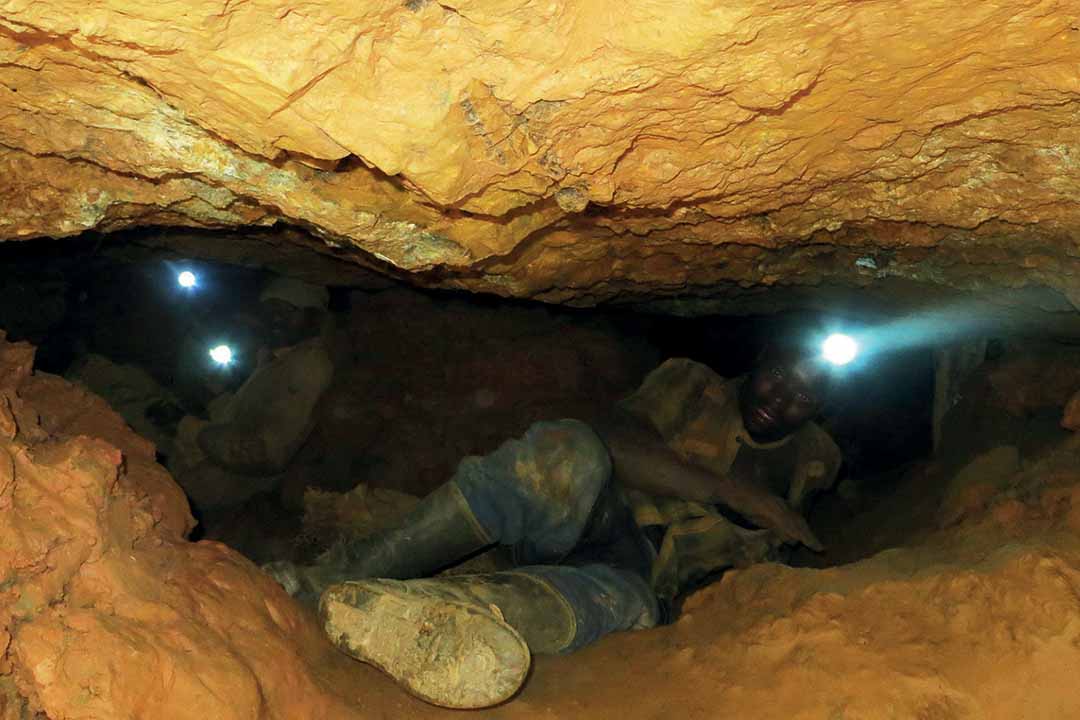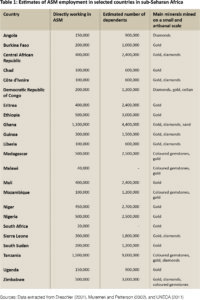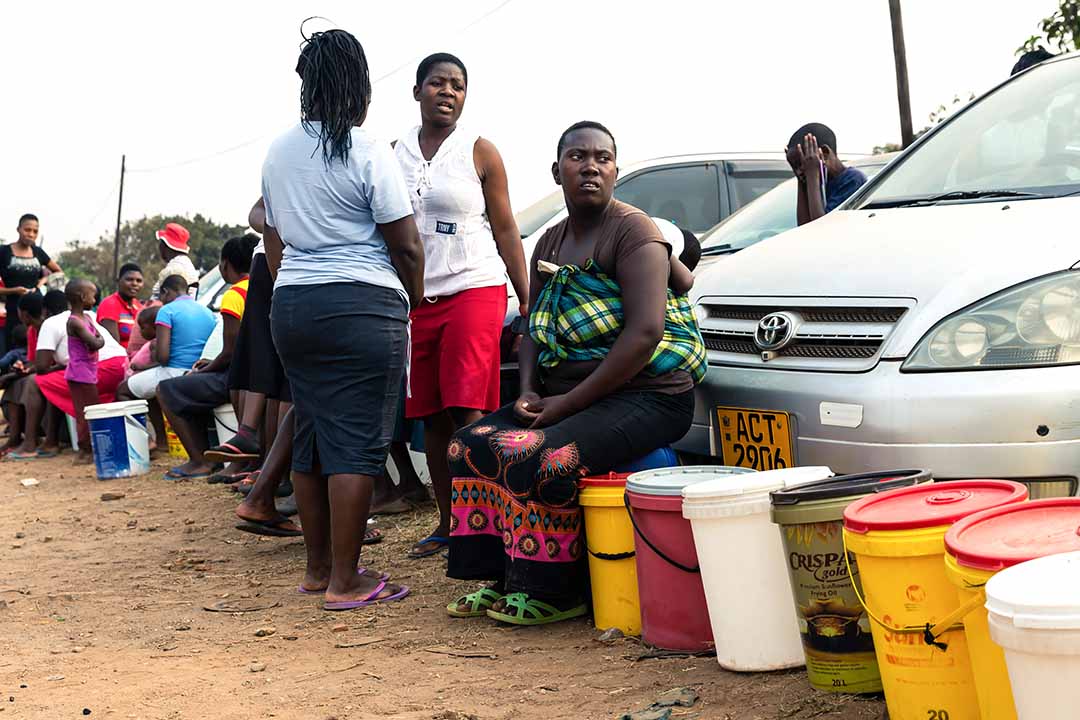
Governments need to implement the Africa Mining Vision, not honour it in the breach
In all corners of sub-Saharan Africa, artisanal and small-scale mining (ASM) is widespread. Low-tech, labour-intensive and with few barriers to entry, the region’s ASM activities have, for decades, attracted an eclectic group of individuals from all segments of society. They include itinerate farmers, educated individuals from large cities, and experienced machine operators made redundant at state-owned mineral extraction projects.
One of the more significant shortcomings of the UN Millennium Development Project was its failure, at the design stage, to take stock of the importance of ASM in poor areas of the world such as sub-Saharan Africa. As a host of recent studies have since shown, ASM is, today, the region’s most important rural non-farm activity and provides direct employment to tens of millions of people (Table 1). ASM also spawns, in the most deprived of settings, a flurry of downstream and upstream economic activities, including transportation, catering, machine repair and accommodation services.
 But this burgeoning body of evidence, gathered from countless localities across sub-Saharan Africa, failed to convince the architects of the newly minted Sustainable Development Goals (SDGs) of the need for developing countries to prioritise the formalisation of, and delivery of support to, resident ASM operations. The focus has rather been on large-scale mine development – which, despite yielding mixed results thus far, continues to be championed as a blueprint for catalysing economic prosperity in sub-Saharan Africa and other parts of the developing world.
But this burgeoning body of evidence, gathered from countless localities across sub-Saharan Africa, failed to convince the architects of the newly minted Sustainable Development Goals (SDGs) of the need for developing countries to prioritise the formalisation of, and delivery of support to, resident ASM operations. The focus has rather been on large-scale mine development – which, despite yielding mixed results thus far, continues to be championed as a blueprint for catalysing economic prosperity in sub-Saharan Africa and other parts of the developing world.
Importantly, certain segments of the donor community have, over the past two-three years, finally come to recognise how important ASM is economically in sub-Saharan Africa. The problem, however, is that most ASM activities in the region are heavily rooted in the informal economy.
Multilateral organisations, including the United Nations Economic Commission for Africa (UNECA), the World Bank, as well as bilateral donors such as Deutsche Gesellschaft für Internationale Zusammenarbeit (GIZ), Department for International Development (DFID) and USAID, have never been more committed to formalising and supporting ASM in sub-Saharan Africa. But to do this, they must work around a development policy framework which, on the one hand, they implemented and are very familiar with, but which was designed without taking into consideration the importance of ASM and, therefore, emphasises very different poverty alleviation strategies.
This article will, first, offer explanations for why ASM activities in sub-Saharan Africa are mostly confined to the informal economy, and second, share positive examples of how some governments in the region are working within the contours of existing rigid regulatory and policy frameworks to formalise ASM.
Africa’s response to tackling the paradox of great mineral wealth existing side by side with pervasive poverty across the continent was contained in the Africa Mining Vision, adopted at the February 2009 AU summit. One of the stated objectives of the Africa Mining Vision is to boost artisanal and small-scale mining or, as the document puts it: “harnessing the potential of ASM to improve rural livelihoods, to stimulate entrepreneurship in a socially responsible manner, to promote local and integrated national development as well as regional cooperation”. However, the Vision requires operations to be formalised, which very few in the region are at present.
As long ago as 1993 – writing at a time when many developing countries were overhauling laws and policies to attract foreign investment to jumpstart large- scale mineral exploration and mining activity, Jeffrey Davidson, a leading global authority on ASM, reminded host governments not to overlook the sector. He stressed that policymakers must “move beyond the establishment of legal frameworks, to identify deposits and areas amenable to small-scale development, including the preliminary evaluation of their technical and economic viability at different levels of operation”.
In sub-Saharan Africa, however, this has failed to happen. By the end of 1995, some 36 of the region’s countries had implemented policy schemes and legislation with the aim of legalising ASM and/or had established sector-specific administrative and technical institutions to facilitate this, or were in the process of doing so, according to a 2007 study by Eleanor Fisher. But at the turn of the century International Labour Organization (ILO) officials reported that, overall, the sector was “bedevilled with too many regulations that are mostly designed to constrain it and too few inspectors to ensure that they do”.
This leads to the first reason why ASM is largely informal in sub-Saharan Africa: the sector’s operators are subjected to the same policy treatment as their large-scale counterparts, despite the fact that their activities are very different organisationally and economically. This has resulted in the installation of bureaucratic licence and permit systems, as well as several costly payments in the process. Most members of the poverty stricken masses looking to regularise their ASM operations have struggled to meet these demands.
In Zimbabwe, for example, there have been reports of a crackdown on riverbed gold panning, with ASM activities now “subjected to evermore costly, bureaucratic and inaccessible national licensing requirements”, according to a 2015 study by Sam Spiegel. In the Central African Republic, artisanal miners are reportedly struggling to purchase an annual licence (patente) of $100, and with paying a host of additional taxes, royalties and rents, according to a 2010 report by Jennifer Hinton and Estelle Levin.
In Ghana, meanwhile, a cumbersome application process requires several payments that are beyond the budget of most, including a GH₵1,000 fee (about $226), which includes GH₵800 (about $180) for maps and GH₵200 (about $45) for a licensed surveyor’s signature, before the relevant local government officer can be approached. Then there is still a GH₵100 (about $45) application fee, a GH₵250 (about $56) processing fee, and a GH₵550 (about $124) consideration fee, as well as unnecessary environmental permits that cost GH₵9,600 (about $2,169). Scholars have been drawing attention to this anomalous situation for decades.
This leads to the second reason: a shortage of land. A commitment to large-scale mineral exploration and mining has required host governments to demarcate massive plots of land to companies, most of them foreign. In Tanzania, these concessions for reconnaissance and prospecting are as large as 150km2. In the Democratic Republic of Congo (DRC), foreign companies can secure a maximum of 50 permits, each valid for an initial period of five years and not exceeding 400km2 or a combined 20,000km2, according to a 2008 World Bank study.
In Ghana, where about 25% of the country has been demarcated for reconnaissance, mineral exploration and mining, there are, at present,11 operating mines and at least 230 active prospecting licences. Here, between 1989 and 1997, an average of 4,352.73km2 of land was converted for mining purposes annually, according to a 2015 study by Fred Owusu-Ansah and Richard Smardon. By December 2007, even a country such as Liberia approved 54 exploration licences covering 12,150,446 acres and nine Mineral Development Agreements (MDA) covering close to 885,000 acres – despite being in the inaugural stages of large-scale mine development, according to a 2008 report by Carolyn Wallace and Roland Lepol.
In short, even if individuals elect to go through the legal channels and obtain a licence, they are not guaranteed a plot of land. In combination, these two factors have prevented most ASM operators in sub-Saharan Africa from migrating into the formal economy.
Despite its many challenges, the Africa Mining Vision has, very importantly, renewed discussions about formalising ASM in sub-Saharan Africa that seemed to have disappeared in the late 1990s. By making “boosting artisanal and small- scale mining” a major goal of the Vision, the region’s governments have been forced to rethink their approach to ASM. Inexplicably, in Ghana the new president has decided to use military intervention to reduce occurrences of unlicensed ASM activity nationwide. But most of the region’s governments – in partnership with donors and NGOs – are working to devise creative strategies to formalise the sector that speak to, and can be slotted seamlessly into, their rigid policy and legislative frameworks.
No “best practice” case study blueprint is yet available, but inspiration can be drawn from a host of countries in the region, each of which has made difficult changes to better position ASM operators to formalise. A significant move was made in Tanzania, where, to reduce the bureaucracy for prospective licencees, the 2010 Mining Act was amended “to include prospecting activities for small-scale miners and addresses licensing barriers by increasing Primary Mining Licence (PML) tenure to be processed at regional zonal offices”, according to a 2015 paper by the World Bank, 2015.
In most African countries, applicants must wait many weeks, if not months, for decisions to be made by officials based in country capitals on their applications for licences. But in Tanzania, the zonal office of the ministry of energy and minerals can now make this decision, potentially shaving off layers of bureaucracy and significant waiting time in the process.
In several other countries, including the DRC and Mozambique, policymakers have put aside “corridors” for ASM – areas reserved for licensed operators. Ghana and Sierra Leone have also commissioned a similar exercise by blocking out areas for prospective small- scale licencees.
It is imperative, however, that these exercises are carried out proactively and continuously. In the case of the former, governments have tended to wait for large-scale exploration companies to relinquish their concessions and then proceed to block these out. Many, not surprisingly, contain very little gold. The key is to engage national geological surveys to prospect mineralised terrain and to block out the areas containing alluvial and near-surface hard rock deposits – which large-scale miners are uninterested in working – to ensure they are not awarded as parts of concessions to foreign companies.
Perhaps the greatest source of inspiration in this area is Zambia, where the ministry of mines and mining development hatched a plan in 2015 to formalise gold panning in the country. Aimed at bringing the thousands of miners who have flocked to towns in Petauke District and Rufunsa District in search of gold into the legal domain, the exercise began when the ministry had the foresight to include provisions for a gold-panning certificate in section 42 of the 2015 Mines and Minerals Development Act. It has since engaged other government bodies, including the ministry of home affairs, the geological survey department and the country’s revenue authority with a view to developing a coordinated formalisation strategy for these activities.
With these bodies on board, the Zambian government is now able to prospect and demarcate areas for gold panners, issue licences, adequately police the sector and provide purchasing services to operators. The government has had the luxury of working in a policy space that establishes gold mining as a development priority – unlike the extraction of gemstones or copper – and has therefore encountered little resistance in putting this plan into operation. While its efforts have recently stalled due to a lack of funding, the Zambia case does demonstrate that where there is political will, ASM can be formalised in sub-Saharan Africa. As of March 2017, the government had issued licences to 740 gold miners.
With these small changes, formalisation of ASM can become a reality in all corners of sub-Saharan Africa. Progress has been slow, but the above-mentioned moves are encouraging signs that the attitude of donors and policymakers toward the sector are finally changing. They now recognise its economic importance in the region. If this is the case, the biggest barrier to the sector’s formalisation in sub-Saharan Africa has been overcome.
Gavin Hilson is professor and chair of Sustainability in Business at the University of Surrey, UK. A global authority on artisanal and small-scale mining (ASM), he has provided consultation on ASM-related issues to the World Bank, the UK department for international development and OXFAM America, among other organisations. He holds bachelor’s and master’s degrees from the University of Toronto and a PhD from the Imperial College of Science, Technology and Medicine, London.













